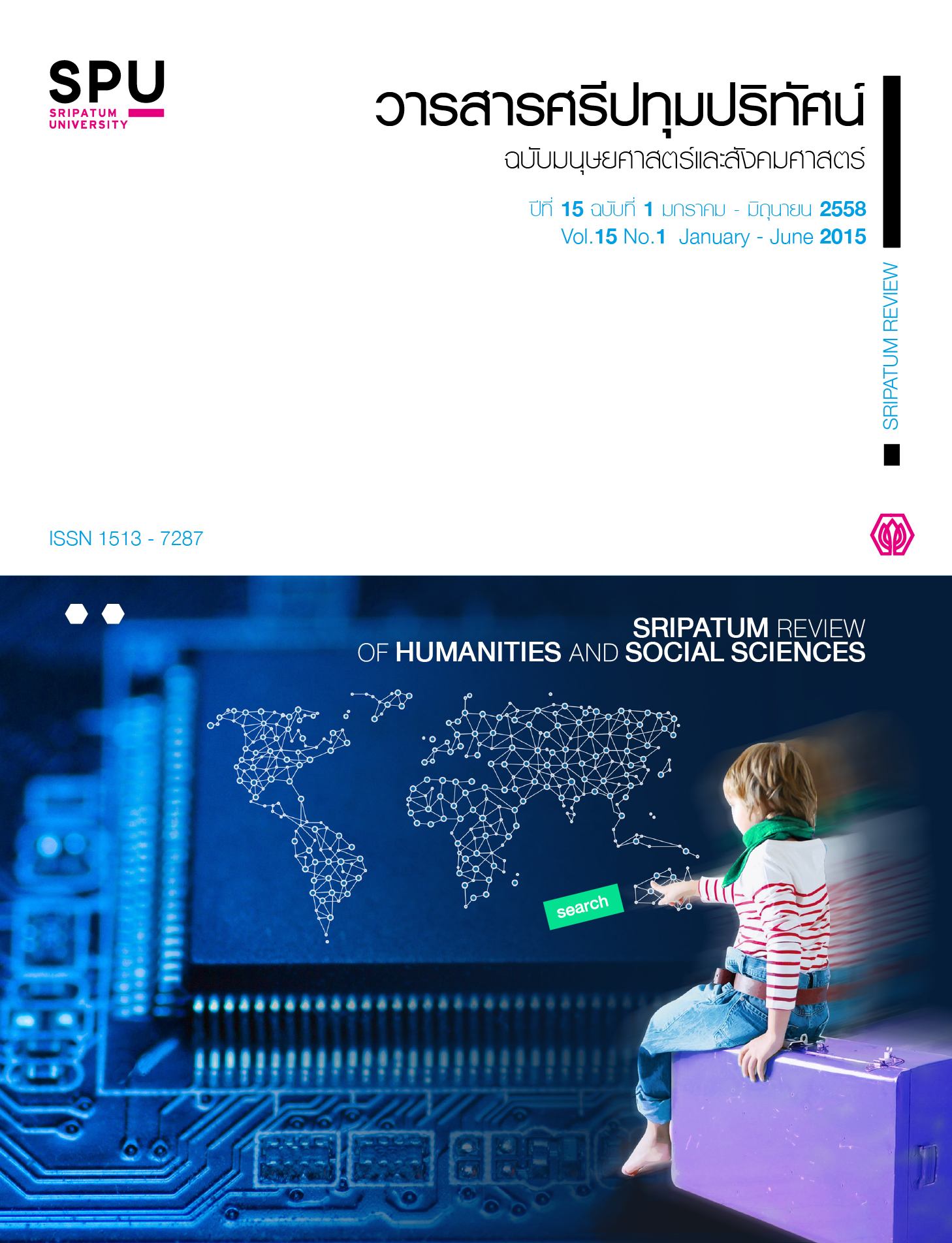THE RISK OF FALSE CONCEPTION OF CONSUMER PRODUCTS CIRCULATED IN SOCIAL MEDIA
Main Article Content
Abstract
The risk of false conception of consumer products occurs when false information is formed, circulated, and obtained mostly via social network. The severity of such occurrence fluctuates according to the level of which the information is circulated. Similar to the case of rumors, this research was conducted to study the factors involved in the spread of such false information in order to prevent any possible damage to businesses caused by the circulation information primarily on facebook. In conducting this research, in-depth interviews were arranged with experts of the field of social network, organizations’ executives, consumers as well as case study.
Qualitative research results indicate that personal judgment, gender, educational background, occupation, and most importantly family background immensely influence the thinking and reasoning process of a person before passing on the information received. Furthermore, according to the research, to prevent the risk, organizations suffering from false conception may clarify themselves by presenting correct information as well as rectify any mistakes as soon as possible in order to establish trustworthiness in the organization and to repair any damage in the reputation. Moreover, they should appoint personnel responsible for overseeing all forms of corporate communications. Organizations may also establish counter-policies to turn crisis into opportunity by reestablishing and reinforcing the brand’s image allowing consumers to fully understand the brand and also the organization.
Article Details
1. กองบรรณาธิการสงวนสิทธิ์ในการพิจารณาและตัดสินการตีพิมพ์บทความในวารสาร
2. บทความทุกเรื่องจะได้รับการตรวจสอบทางวิชาการโดยผู้ทรงคุณวุฒิ แต่ข้อความและเนื้อหาในบทความที่ตีพิมพ์เป็นความรับผิดชอบของผู้เขียนแต่เพียงผู้เดียว มิใช่ความคิดเห็นและความรับผิดชอบของมหาวิทยาลัยศรีปทุม
3. การคัดลอกอ้างอิงต้องดำเนินการตามการปฏิบัติในหมู่นักวิชาการโดยทั่วไป และสอดคล้องกับกฎหมายที่เกี่ยวข้อง
References
เดชอุดม ไกรฤทธิ์. 2557. คำอธิบายกฎหมายการกระทำความผิดเกี่ยวกับคอมพิว เตอร์. (พิมพ์ครั้งที่ 2).กรุงเทพฯ: สภาทนายความ ในพระบรมราชูปถัมภ์.
นิภาภรณ์ จัยวัฒน์. 2551. “ความเสี่ยงจากการสื่อสารด้านผลิตภัณฑ์สุขภาพ.” วารสารพิษวิทยาไทย. 23 (2): 12-18.
“แพทย์ยันบะหมี่ซองไร้พิษ” ข่าวสาธารณสุข: โพสต์ทูเดย์ออนไลน์. สืบค้นเมื่อวันที่ 30 มิถุนายน 2557.
แมทท์ เฮก. 2547. 100 แบรนด์ล้มดัง ความล้มเหลวที่ต้องเรียนรู้ของบริษัทยกษ์ใหญ่ทั่วโลก แปลจากเรื่อง Brand Failures. โดย ลักขณา ลีละยุทธโยธิน ธีรพจน์ วัชราภัย ชาลอต โทณวณิก สุรางค์รัตน์ จิราธิวัฒน์ สุวรรณี ศรีธัญโชติ วิโรจน์ เหลืองจริยากุล และวัฒนา มานะวิบูลย์. กรุงเทพฯ: บริษัทเนชั่นบุ๊คส์ อินเตอร์เนชั่นแนล จำกัด.
รัญชนา รัชตะนาวิน วรัชญ์ ครุจิตและอุดม ไพรเกษตร. 2556. ทำธุรกิจหนังสือพิมพ์ท้องถิ่นไม่ยากอย่างที่คิด. กรุงเทพฯ : ศูนย์บ่มเพาะธุรกิจ มหาวิทยาลัยศรีปทุม.
โรเบิร์ต แอล. ไดเลนซาไนเดอร์. 2555. คู่มือการประชาสัมพันธ์ยุคดิจิทัล ของสมาคมการจัดการแห่งสหรัฐอเมริกา แปลจาก The AMATM Handbook of Public Relations Leveraging PR in the Digital World. โดยผู้ช่วยศาสตราจารย์ดร.วรัชญ์ ครุจิต.กรุงเทพฯ: สำนักพิมพ์มหาวิทยาลัยศรีปทุม.
Berlo, K. David. 1960. The Process of Commucation. New York: Holt Rinehart and Winston, Inc., p. 40-71.
Erik Qualman. 2013. Socialnomics-- how social media transforms the way we live and do business. (2nd ed). New Jersey: John Wiley & Sons Inc.
Garven, J.R. 1992. “An Exposition of the Implications of Limited Liability and Asymmetric Taxes for Property-Liability Insurance,” Journal of Risk and Insurance. (59), 34-56.


